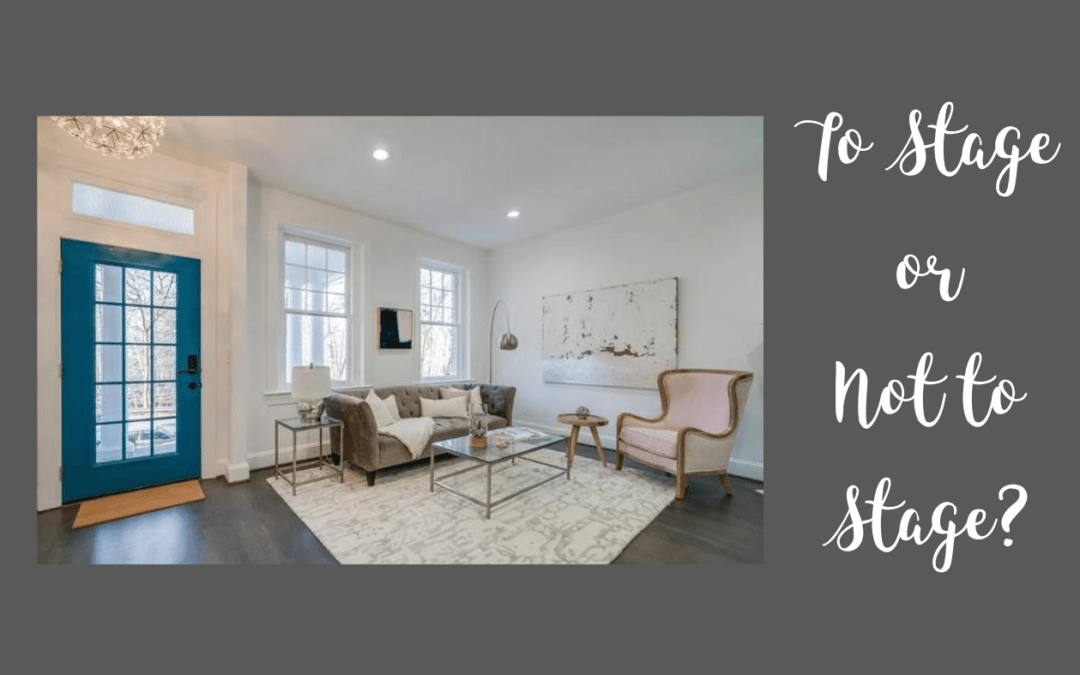You made the decision not to stage and now your flip is sitting on the market longer than you anticipated. You think to yourself, “All the work I put into creating an open floor plan unique to this area, how have I not closed a sale yet?” Real estate investors and buyers see properties through different lenses, and just because you can picture where the coffee table, couch, and chairs will go, doesn’t mean the buyer will.
At our last CAZA Investor Meetup, we noticed that there isn’t really a general consensus when it comes to staging. Some investors say always make room for staging in the budget and others opt for light staging or virtual staging to save a little money. The whole point of house staging is to help a buyer visualize themselves living in the house. Each room in your flip should outline that room’s purpose with the goal of having a buyer’s imagination run wild picturing themselves living in the space. Even if the price of the house is a little on the high side, if you won the buyer’s heart over by staging you successfully increased your chances of getting that sale. I know what you’re thinking – hiring a professional stager is pricey! But thankfully staging isn’t always necessary. When people ask us, our rule of thumb is the more expensive the property, the more important staging is. That being said, run-of-the-mill remodels do not always need staging. If your flipped property is very similar to its comparables then staging might not be worth it. But if you’re shooting for the highest price in the neighborhood, then yes you’re probably going to have to dress it up more.
Here are some questions that can help you determine if staging is a must for your property:
1. Will potential buyers fall in love with your home from the street? If not, stage it.
2. Does each room have a clearly defined purpose? Would your target market prefer a room be
3. Will professional staging give you a higher return?
4. How is the competition with comparable properties in the neighborhood? Will staging give
5. Do you have an open floor plan? Is it difficult for buyers to imagine the empty areas furnished?
6. Does the house look kind of bland and boring without any furniture or decor? Stage it.
Once you decide you are going to stage; then you need to figure out if you’re going to fully stage, light stage, partially stage, or virtual stage.
Fully staging is using furniture and decorative items to fully suggest a function for each room.
Light Staging is vaguely suggesting a use for key rooms but keeping it very light with artwork and other decorative items.
Partially Staging is a combination of light staging and fully staging only in rooms where the buyer may need help visualizing it furnished. Staging the living room always has a positive effect on the buyer because they can easily envision themselves relaxing and enjoying time in that space with their families. But other rooms such as the kitchen that already has impressive features like upgraded counters and high-end fixtures and appliances can be left to speak for itself.
Extra bedrooms don’t always require staging either. Once the buyer has already had a positive experience throughout the tour and reaches the extra bedrooms, they’ll already have an opinion on how their lives will fit into the house. Ditching generic blinds for some flowy curtains could be all a room needs.
How about an option that costs less and still gets buyer’s in the door? Approved for the MLS just last year, virtual staging is a creative tool for investors to quickly bring in a qualified buyer. Virtual staging will bring life to your property, just make sure to follow the MLS’s rules for posting and to find a reputable company.
Deciding to stage your property involves a lot of research, a look at your return on investment, and thinking like a buyer. With these tips, you can get potential buyers in the door and sell your house faster so you can move on to your next project.

